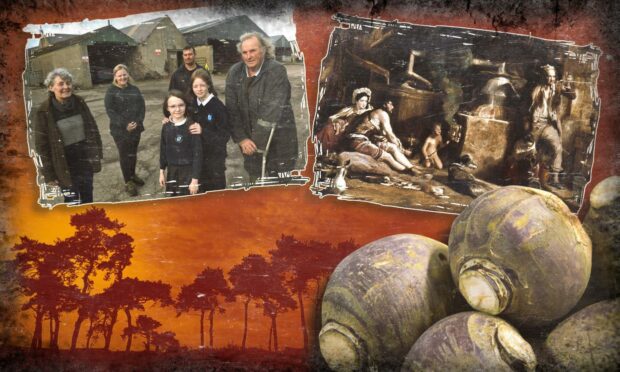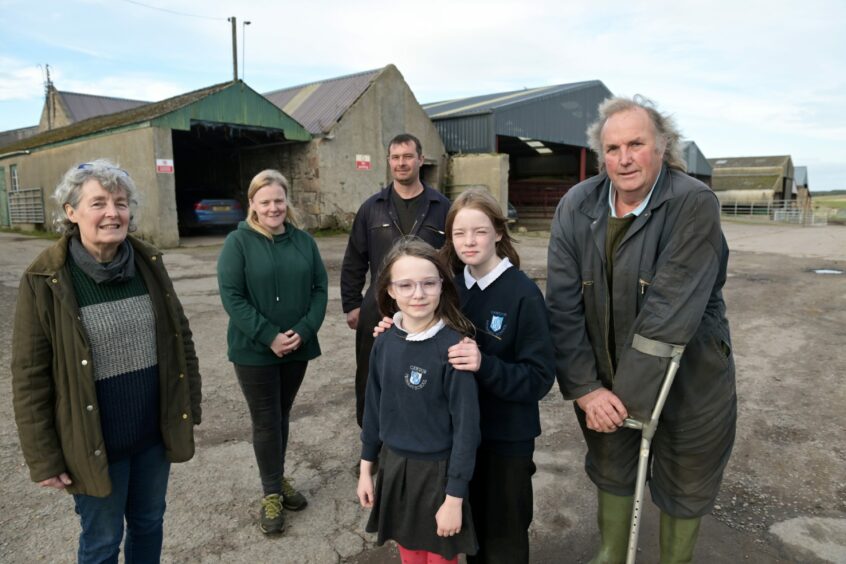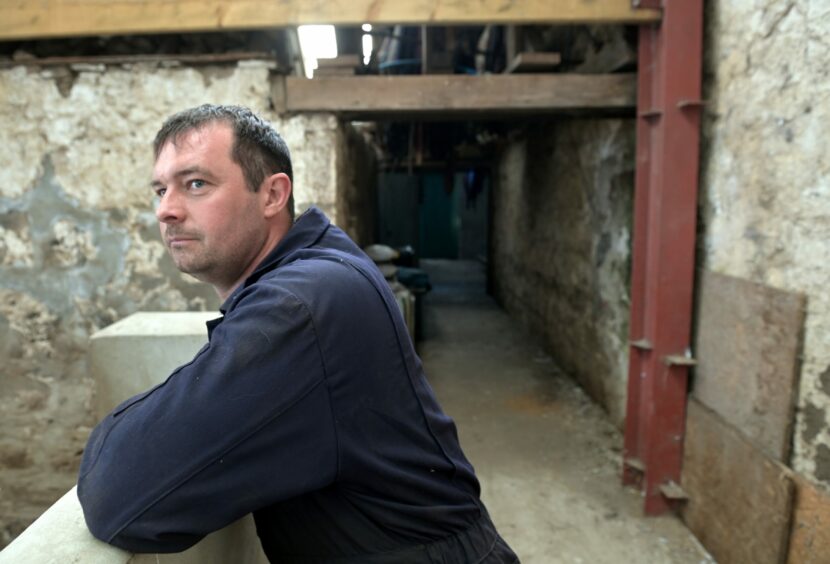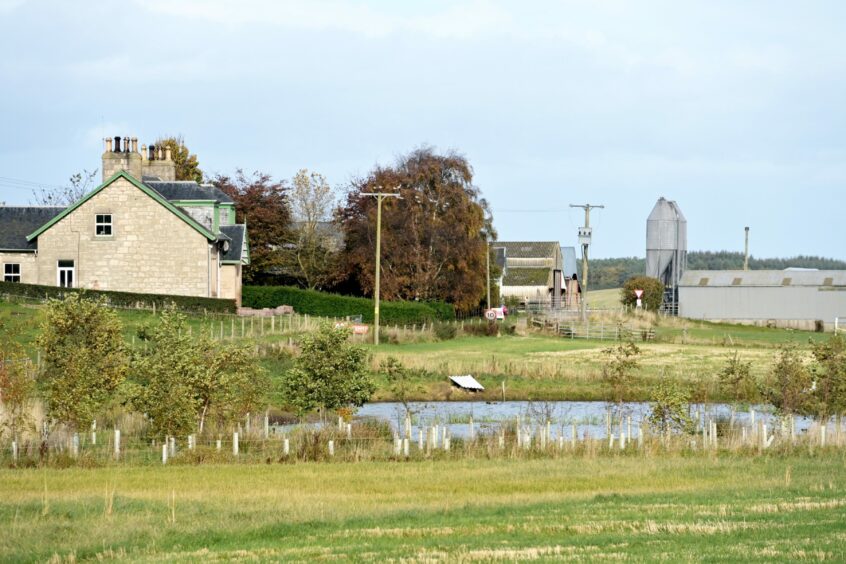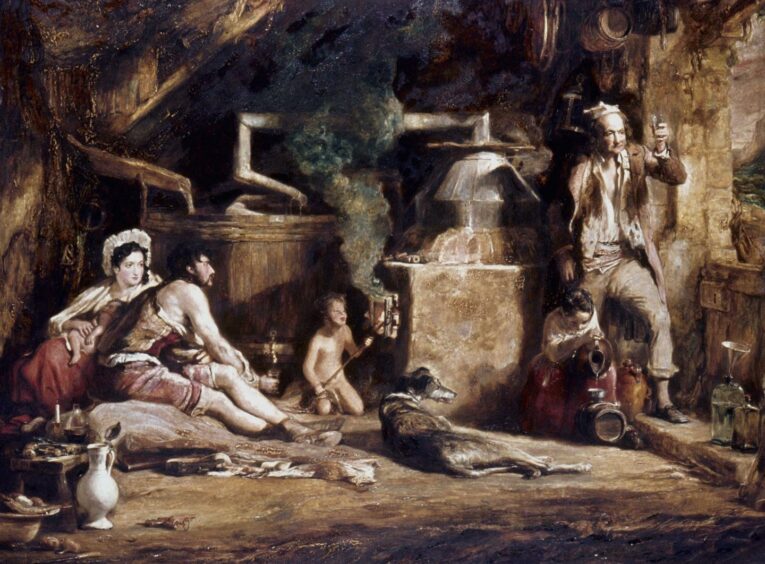It’s just too tempting. You’ve been out having a few drinks with pals at Halloween time and on your way home you come across a heap of turnips.
What could be more fun than chucking them, along with a load of stones, at people’s doors?
Pooltown Farm worker Donald Cameron’s door took a particular battering, the missiles causing “considerable damage, breaking the door in three places and forcing the lock.”
In the cold light of day, the pranksters, ploughman Charles Cross and apprentice blacksmith John Clark, nursing sore heads, found themselves up before the sheriff.
Clark was acquitted, but Cross was found guilty of malicious mischief and sentenced to pay a fine of £1.1s – well over £100 in 1858- or face 14 days behind bars.
Luckily for Cross, his mates paid the fine.
Life more sedate now
Nowadays, 163 years later, life at Pooltown Farm is more sedate.
It’s a 600 acre beef and cereal enterprise with stabling for 27 horses, and about to pass to the fourth generation of the Philip family.
The farm was bought by J B Philip in 1947, grandfather to current incumbent Colin, who has been working on the farm since 1973.
He’ll shortly hand the farm on to son Christopher.
Colin said: “It was a dairy farm, mainly Ayrshires, until 2006.
“My father was the first in the north of Scotland to build a milking parlour with cubicles.
“We kept pigs too, at one time fattening 30 a week.”
In the late seventies, Colin started a pheasant rearing enterprise, at one time hatching 20,000 birds a week, plus day old chicks delivered to the door from France.
Juniper Pheasantry of Ardersier is now run by Colin’s brother, David.
In the nineties, the farm sustained six livings.
Like all farms, it’s now down to one or two, to the detriment of the local community, Colin feels.
He remembers Halloween being lively in the area when he was a child.
“We would hollow out a turnip and put a spooky face on it, then go round the houses in Flemington singing or reciting a poem in the hope of getting sweets.”
No turnips were thrown, however.
Spooky presence
And it turns out every day was Halloween in one part of the old steading.
For a number of years people going into the old shed felt watched by a presence.
Colin said: “I used to feel the hairs going up on the back of my neck.
“One lad used to run through the steading, and two or three of the girls at the livery said they felt something there.
“There were reports that it was an old man in tackity boots and an old greatcoat, possibly from the turn of the century, a farm worker we presume.”
Recent renovations to the shed saw the roof raised by several feet.
“It’s no longer low and dark,” Colin said. “It’s bright with skylights, and people don’t seem to feel the presence any more.”
The current farmhouse was built a few years after the night of the Victorian Halloween turnip japes.
It reliably dates to 1889 – the evidence coming from a joiner’s dated signature on a piece of old floorboard found during recent restoration work.
It’s in the style of famous Inverness architect Alexander Ross, says buildings archaeologist Susan Brook who has assessed the building, but there’s no definite proof.
She said: “Its architectural style and similarity to other local farms known to have been designed by Ross seem to indicate his involvement in the building of the farmhouse too.”
Pooltown is in the old parish of Petty, 10.5 miles north-east of Inverness and almost 4 miles south-west of Nairn.
‘Sober, peaceable and industrious’
In the Old Statistical Account of 1792, the parish had ‘no towns, villages or manufacturers’ in it and people were described as “in general sober, peaceable and industrious.”
By 1845, in the New Statistical Account, the parish is described as “entirely agricultural”.
Perhaps the Halloween pranksters just wanted to liven things up.
The first evidence of a farm at Pooltown dates back to 1798, in the name of John McIntosh, possibly a factor.
Fifteen later things got more interesting with the presence of a distillery on the farm.
Licit still
Susan said: “It seems Pooltown was now owned by James Falconer and his father Hugh, of Flemington.
“Records in the House of Commons relating to tax due on whisky stills in Scotland (1813 to 1819) indicate they operated a ‘small still’ at Pooltown, which seemed to be doing well.
“The existence of a licit still and distillery with a total gross revenue of between £1,167 6s 3d and £4,764 16s 10d would have been a considerable revenue for a relatively small distillery- but sadly the distillery was hit with excise duty bills which forced its closure.”
In 1816, a notice appeared relating to a sale of distillery items from ‘Poletown of Flemington’ to pay excise duty and then the distillery and farm were advertised for sale or let along with ‘thrashing mill, malt and meal mills’.
Susan said: “The advert indicated that the distillery could produce between 80,000 and 40,000 gallons of spirits a year.”
Matters went from bad to worse.
In March 1819 James Falconer bound the distillery and farm over to his creditors and put them up for let.
But by July 1820, the property is still for let and there’s a ‘roup of horses, black cattle, implements of husbandry, household furniture, and distillery apparatus, of every description’.
Susan said: “The apparatus and utensils are advertised as being from an ‘extensive’ whisky distillery and again provide an insight into the scale of production that must have taken place at Pooltown.”
Public roup
Finally, in August 1820 a notice appeared for another public roup, where the ‘whole growing corns on the farms of Poletown and Lambhill of Flemington, consisting of barley and oats’ as well as ‘hay, potatoes and turnips and the machinery of the threshing and meal mill at Poletown and a number of large vats, and several other articles connected with the distillery will be sold’.
Susan said: “Both James and Hugh’s gravestones are both to be found in the cemetery at Brachlich although no further evidence has been found for their lives after the demise of their failed business enterprise at Pooltown and the other surrounding farms.”
Does your home or farm have intriguing history? Would you like our Past Times team to look into its past? Please contact susy.macaulay@pressandjournal.co.uk
